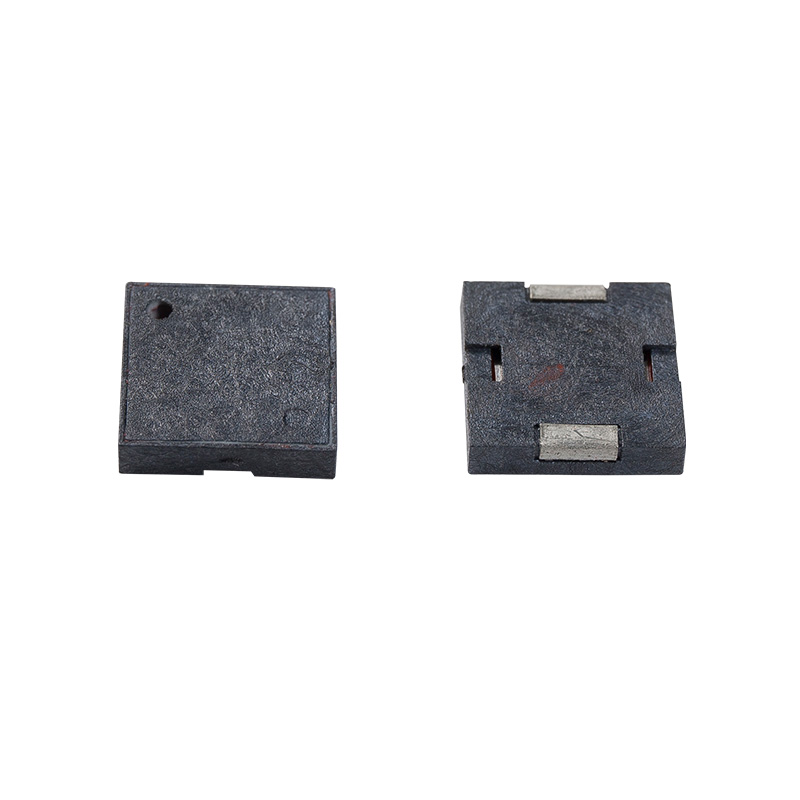An SMD Buzzer Passive generates sound by using the piezoelectric effect, where an external electrical signal causes a physical mechanical vibration in the piezoelectric element inside the buzzer. Unlike an active buzzer, which has an internal oscillator to generate sound on its own, a passive buzzer relies entirely on an external signal, typically from a microcontroller or other electronics, to drive it. Here’s a step-by-step breakdown of how it works:
1. Piezoelectric Element
The core component of an SMD Buzzer Passive is the piezoelectric element—a thin, flat piece of piezoelectric material (often ceramic) that exhibits a special property: it changes shape when an electrical current is applied to it. This is the essence of the piezoelectric effect. The material either expands or contracts depending on the polarity of the applied voltage.
2. Application of External Electrical Signal
For the buzzer to make sound, it needs an external signal to power the piezoelectric element. This is usually an alternating current (AC) signal, or more commonly, a square wave generated by an external source such as a microcontroller, sound generator circuit, or other electronic system.
When the AC signal is applied, the polarity of the voltage changes periodically. As the voltage alternates, it causes the piezoelectric element to expand and contract at the same frequency as the signal.
The frequency of this external signal determines the pitch of the sound produced by the buzzer. For instance, a signal with a higher frequency will cause the piezoelectric element to vibrate faster, producing a higher-pitched sound, while a lower-frequency signal will produce a lower-pitched sound.
3. Mechanical Vibration Produces Sound
As the piezoelectric element vibrates (or deforms), it creates pressure waves in the air, which we perceive as sound. Essentially, when the element vibrates, it pushes and pulls on the surrounding air molecules, generating sound waves.
The amount of deformation in the piezoelectric element also affects the loudness of the sound. The higher the voltage of the external signal, the more the element deforms, and the louder the sound.
The shape and size of the piezoelectric element also play a role in the frequency range and efficiency of sound production.
4. External Circuit Control
Because an SMD Buzzer Passive does not contain an internal oscillator, it cannot produce sound by itself. It requires an external circuit to control the sound. This control circuit typically:
Generates the frequency (by producing a square wave or other alternating signals).
Supplies the required voltage to drive the piezoelectric element.
Modulates the tone by varying the frequency of the signal, and can adjust the volume by changing the signal’s amplitude.
For example, a microcontroller or timer IC can generate a square wave with a specific frequency, sending it to the buzzer. By adjusting the frequency, the system can change the pitch of the sound, making the buzzer produce different tones depending on the needs of the application.

5. Why It's Passive
The reason this type of buzzer is called a passive buzzer is that it doesn’t have the necessary components (such as an internal oscillator or microchip) to generate sound by itself. Instead, it relies on the external circuit to provide the electrical signal. This makes the buzzer simpler and often cheaper than an active buzzer, but it also means that it requires an external signal source to function.
6. Applications
SMD Passive Buzzers are commonly used in devices where simple sound alerts are needed. Examples include:
Alarms (e.g., doorbells, timers).
Indicators (e.g., in electronics or appliances to signal an error or notification).
Toys (used to create sound effects).
Embedded systems (such as when a microcontroller needs to alert a user via a tone).
7. Advantages of SMD Passive Buzzers
Low Power Consumption: Since the buzzer does not have an internal oscillator, it consumes less power, which is an advantage in battery-operated devices.
Flexibility in Sound Control: The external signal generator provides flexibility in terms of tone modulation. The pitch, rhythm, and duration of the sound can be easily controlled programmatically by adjusting the signal sent to the buzzer.
Compact and Cost-Effective: SMD (Surface Mount Device) buzzers are small and lightweight, making them ideal for compact electronic circuits where space is a premium.
8. Limitations
No Sound Generation Without External Signal: A key disadvantage is that the buzzer cannot work independently; it needs an external driving signal. Therefore, the design of the electronic circuit that controls it is crucial.
Limited Volume: Due to the nature of the piezoelectric element, passive buzzers may not be as loud as active buzzers, though they are sufficient for many applications.


 EN
EN  English
English Deutsch
Deutsch 中文简体
中文简体
